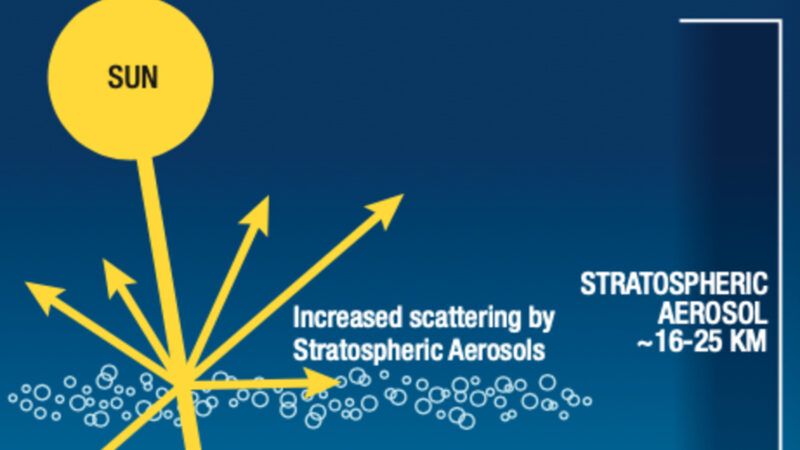Prominent Climate Change Activist Researchers Finally Call for Solar Geoengineering Research
Reason first argued for researching such a planetary emergency cooling system 26 years ago.

Recent research strongly suggests that the worst-case scenarios of man-made global warming resulting largely from rising atmospheric concentrations of carbon dioxide emissions from burning fossil fuels are highly implausible. Simply put: Imminent climate armageddon is not in the cards. But what if the more sanguine calculations for increases in future global average temperatures turn out to be wrong and the world starts heating up much faster? Wouldn't it be wise to have available some kind of emergency cooling system for the planet?
Yes, says a group of prominent activist climate change researchers in an open letter calling for just such research. The letter points out that "the most rapid way to potentially counter some near-term climate warming is through an important class of climate intervention techniques that slightly change the energy entering and leaving the planet." They particularly cite solar radiation management (SRM) techniques such as releasing reflective sulfate particles high in the atmosphere (stratospheric aerosol injection) or spraying sea salt into low clouds over the ocean (marine cloud brightening) as possible ways to slow unexpectedly fast future warming.
Notable signatories to the open letter include Columbia University climatologist James Hansen, Rutgers University climatologist Alan Robock, and Harvard applied physicist David Keith. Hansen notoriously first testified before a congressional committee that man-made climate change had been detected way back in 1988. Keith is already leading a team of scientists seeking to research solar geoengineering.
The open letter further notes that "since decisions on whether or not to implement SRM are likely to be considered in the next one to two decades, a robust international scientific assessment of SRM approaches is needed as rapidly as possible." Needed research includes computer model simulations, observations, analytical studies, and small-scale field experiments.
The arguments in the open letter for proceeding with SRM research mirror those I made most recently in my October 2022 Reason feature article, "The Unscientific Panic Over Solar Geoengineering." In fact, I first argued in favor of researching SRM as an emergency cooling system for the planet in 2008. And well before my article, University of California, Irvine astrophysicist and Reason contributing editor Gregory Benford argued in his 1997 Reason article, "Climate Controls," for research into various geoengineering proposals including SRM aimed at cooling the climate.
As I reported in my October 2022 article, proponents of SRM research already face considerable opposition from activist groups and scientific research colleagues:
In January [2022], a group of climate researchers published an open letter in the journal WIREs Climate Change calling for "an international non-use agreement" to prohibit research and development of solar geoengineering technologies. "These proliferating calls for solar geoengineering research and development are cause for alarm," they argued, "as they risk the normalization of these technologies as a future policy option." To stop that, "a strong political message to block these technologies is needed." They seek to completely halt all research in its tracks.
However tardy, at least the climate researchers and activists behind the new open letter should be commended for recognizing that mandated solar geoengineering research ignorance will not yield economic and environmental bliss for future generations that will be coping with whatever the effects of climate change turn out to be.


Show Comments (113)